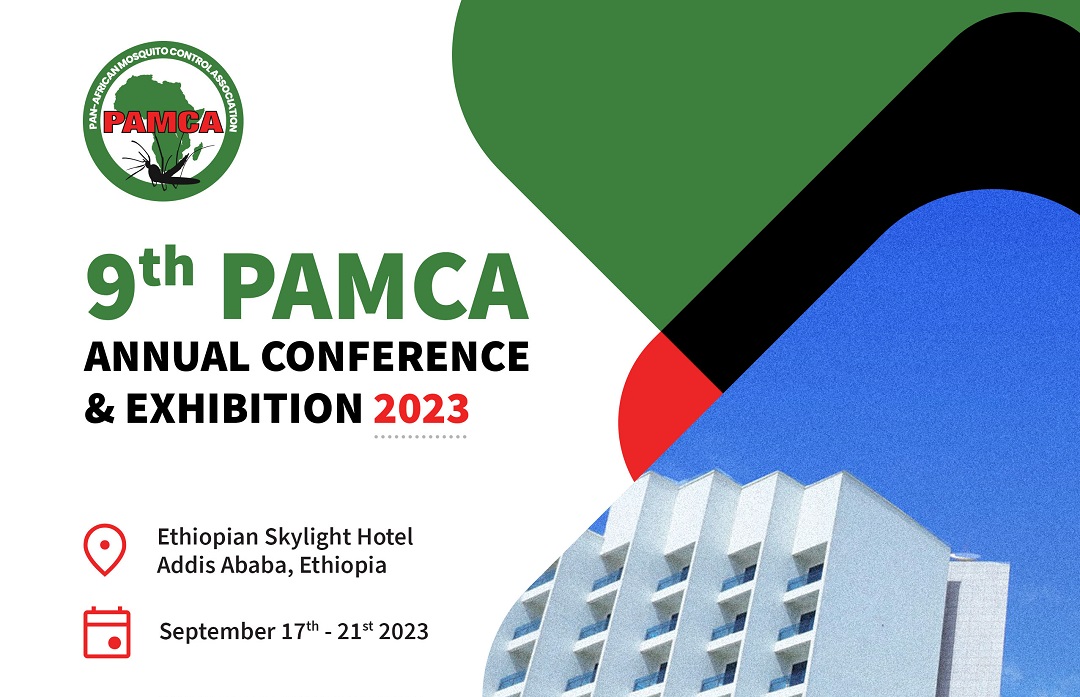Abstracts should present information in the Nine (9) thematic areas listed. All abstracts selected for oral or poster presentation will be published in the annual conference program and the online abstract book. In addition, abstracts will be published in advance of the annual conference on the online program.
Main theme: Reorienting surveillance and management in the context of emerging threats of disease vectors
Sub-themes:
- Vector bionomics: vector biology, ecology, taxonomy and population genetics
- Vector surveillance: surveillance systems, community-based surveillance, epidemiology, disease control programs and global health
- Precision public health and innovations for VBD elimination: artifical intelligence, entomological databases, genomic surveillance
- LLINS, IRS and insecticide resistance management
- Larval source management and integrated vector management
- New and re-emerging disease vectors, climate change, and One Health
- Neglected tropical diseases (NTDs)
- Social science: mainstreaming social science in VBD interventions
- Women in science: centering the role of the women in vector control professionally and in the community
Instructions to authors
When preparing an abstract for submission, please carefully follow the instructions below:
Abstract submissions should present information that falls within the Nine (9) thematic areas listed. All abstracts selected for oral or poster presentation will be published in the online Abstract Book.
For all submissions, please indicate the type of presentation requested. Oral presentations are given a 10-minute slot within a Scientific Session. During the scientific sessions, presenters will be required to be available to answer questions after participants have listened to the recorded talks.
Poster presentations are given in an assigned poster session.
Style: All abstracts must be in English. The maximum word count is 300 words. This limit does not include the title. Your abstract should be structured in the format outlined below.
Abstract format
Suited for scientific research conducted in all disciplines. The abstract submitted should contain concise statements of:
- Background: indicate the purpose and objective of the research, the hypothesis that was tested or a description of the problem being analyzed or evaluated.
- Methods: describe the study period/setting/ location, study design, study population, data collection and methods of analysis used.
- Results: present as clearly and in as much detail as possible the findings/outcome of the study. Please summarize any specific results.
- Conclusions: explain the significance of your findings/outcomes of the study and its implications for the reduction of vector-borne disease
Enter your title, authors and/or text using all upper-case letters. Do not acknowledge funding sources or include references. If your abstract involves work in progress, please indicate when the final results will be available.
Authorship
The first author entered on the Author Information screen at the submission website should be the person who intends to present the abstract. When entering names, the author’s given name belongs in the First Name field, and the family name belongs in the Last Name field.
Copyright Policy
Abstracts should not include libelous or defamatory content. Material presented in abstracts should not violate any copyright laws. If figures/graphics/images have been taken from sources not copyrighted by the author, it is the author’s sole responsibility to secure the rights from the copyright holder in writing to reproduce those figures/graphics/images for both worldwide print and web publication. All reproduction costs charged by the copyright holder must be borne by the author.
Plagiarism
The conference organizers regard plagiarism as serious professional misconduct. All abstracts must be in English. The text maximum is 300 words. This limit does not include the title. Enter your abstract using the sub-titles indicated; enter your title, authors and/or text using all upper case letters. Do not acknowledge funding sources or include references. If your abstract involves work in progress, please indicate when the final results will be available.
Abstracts that do not conform to this format will be rejected automatically and will not be considered for presentation at the conference.
All abstracts must be in English. The text maximum is 300 words. This limit does not include the title. Enter your abstract using the sub-titles indicated; enter your title, authors. Do not acknowledge funding sources or include references. If your abstract involves work in progress, please indicate when the final results will be available.
Abstract Submission format
- Background
- Methods
- Results
- Conclusion
Abstracts that do not conform to this format will be rejected automatically and will not be considered for presentation at the conference
Abstract submission begins: February 1, 2023
Abstract submission ends: March 31, 2023
Late-breaker abstract submission Starts: May 20, 2023
Late-breaker abstract submission Ends: May 31, 2023
Abstract acceptance notification: July 31, 2023
Registration, Early-Birds Starts: May 1, 2023
Registration, Early-Birds Ends: August 31, 2023
Registration, On-site /Late: From September 1, 2023

